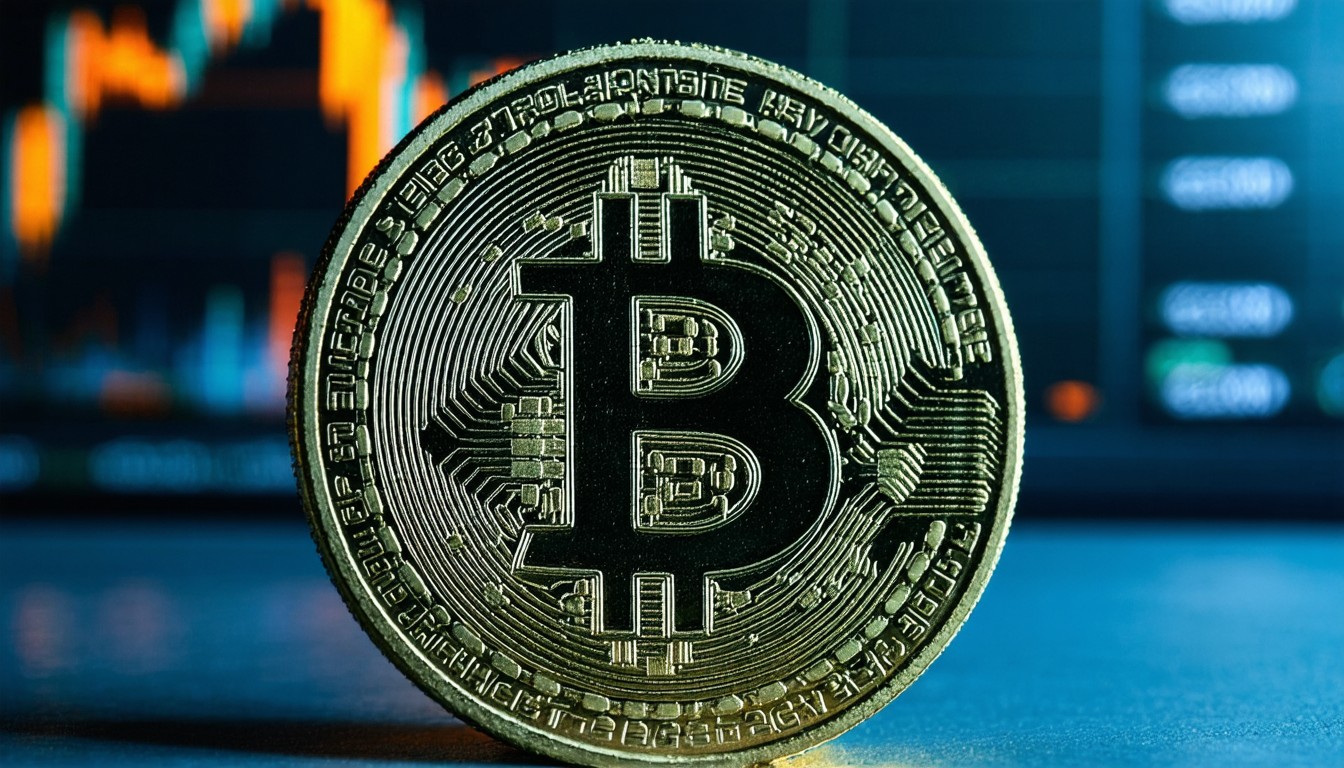Bitcoin, the world’s most recognized cryptocurrency, has evolved from a niche digital asset to a global financial phenomenon. The “price of Bitcoin” is now a metric followed not only by crypto enthusiasts but also by institutional investors, regulatory bodies, and everyday consumers. Understanding this live value and the factors that drive its volatility has become crucial for navigating modern digital finance. With ongoing market developments and increased mainstream adoption, Bitcoin’s price commands daily headlines and influences a growing ecosystem of blockchain-based assets.
The Mechanics Behind Bitcoin Pricing
How Bitcoin’s Value Is Calculated
Unlike fiat currencies, Bitcoin is not issued by a central authority. Its price is determined through supply and demand dynamics across hundreds of global exchanges. Since the total supply of Bitcoin is capped at 21 million coins, scarcity is a fundamental driver. When demand spikes—due to macroeconomic uncertainty, institutional investment, or technological milestones—prices can surge. In contrast, negative regulatory news or security breaches may trigger sharp corrections.
Bitcoin trades 24/7, making its headline “live value” responsive to global events in real time. This constant price discovery distinguishes Bitcoin from traditional markets, where opening and closing bells dictate daily momentum.
Key Influences on Market Value
Several factors consistently influence the price of Bitcoin:
- Market Sentiment: News cycles, social media, and influential figures can rapidly change sentiment, leading to dramatic short-term moves.
- Regulatory Developments: Announcements from the SEC, ECB, or other authorities often induce volatility, as the market interprets regulatory risk or clarity.
- Macroeconomic Trends: Inflation fears, interest rates, or geopolitical instability can drive investors toward “store of value” assets like Bitcoin.
- Network Metrics: On-chain data such as transaction volume, hash rate, and wallet distribution can impact confidence in the asset’s underlying security and utility.
“Bitcoin’s price moves are a fascinating reflection of both technological innovation and classic market psychology,” notes Michael Sonnenshein, CEO of Grayscale Investments. “It is at the intersection of digital scarcity and global demand.”
Historical Price Trends and Milestones
Early Growth and Volatility
Bitcoin’s journey began in 2009, valued at fractions of a cent. By 2011, it had surpassed $1, signaling the beginning of a tumultuous path punctuated by sharp rallies and frequent corrections. Early incidents—such as the collapse of Mt. Gox in 2014—highlighted both the potential and the risks associated with unregulated or immature crypto markets.
Mainstream Acceptance and Institutional Adoption
A turning point arrived in 2017, with Bitcoin’s first surge above $19,000, fueled by widespread media attention and the emergence of initial coin offerings (ICOs). The subsequent crash provided a sobering reminder of speculative excess but did not deter long-term believers.
In recent years, high-profile endorsements and institutional allocations have propelled Bitcoin’s legitimacy. Companies like Tesla, Square, and MicroStrategy made significant balance sheet allocations, while financial products like Bitcoin ETFs broadened accessibility for mainstream investors. Throughout these cycles, the live price of Bitcoin has demonstrated resilience, repeatedly setting new all-time highs.
Key Price Milestones
- 2013: First crossed $1,000—establishing Bitcoin as a noteworthy financial phenomenon.
- 2017: Surged to nearly $20,000—followed by large-scale correction.
- 2020–2021: Institutional investment triggered a climb past $60,000.
- Ongoing: Volatility remains pronounced, with fluctuations often exceeding double digits in a single trading day.
What Drives Extreme Volatility in Bitcoin’s Price?
The Role of Liquidity and Market Depth
Despite maturation, Bitcoin trading can be thin during off-peak hours or on less-liquid exchanges. This means sizable trades have the potential to move the market quickly, resulting in large price swings.
Behavioral Factors
Investor psychology plays a pivotal role. FOMO (fear of missing out) and panic selling can amplify moves beyond what fundamentals justify. In practice, social media platforms and algorithmic trading contribute to rapid trend acceleration.
Regulatory News and Macro Events
Global regulation is a double-edged sword for Bitcoin prices. Approval of spot ETFs in the US, legalization in El Salvador, or banking bans in major countries each shift the landscape almost overnight. Macro events—pandemic stimulus, regional conflicts, or inflationary policies—also exert outsized impact.
Real-World Example: The Impact of Regulatory Announcements
A practical case study can be seen with the U.S. Securities and Exchange Commission’s approval of Bitcoin ETFs in early 2024. This event intensified institutional interest and drove acute price movements, as billions of dollars flowed into newly accessible financial products. Conversely, threats of bans or restrictions in major markets have historically sparked sell-offs, demonstrating the market’s sensitivity.
Technical and On-Chain Analysis: Tools for Assessing Bitcoin’s Price
Popular Indicators for Bitcoin Analysis
Seasoned traders use a combination of technical and on-chain metrics to gauge Bitcoin’s real-time value and forecast trends. Common tools include:
- Moving Averages (MA/EMA): Help to smooth price data and spot trend direction.
- Relative Strength Index (RSI): Identifies overbought or oversold conditions.
- Volume Profiles: Reveal the intensity of buying/selling at various price levels.
- On-Chain Metrics: Analyze transaction volumes, wallet distribution, and mining activity for signals of network health.
Long-Term Value Indicators
Some analysts advocate for frameworks like the Stock-to-Flow Model, which compares the existing supply of Bitcoin to the rate of new issuance. While debated, these models can offer a lens for understanding macro trends behind short-term noise.
Market Sentiment, Narratives, and the Role of Media
The crypto industry has a unique relationship with digital communities and information flows. Influential figures—such as Elon Musk or leading developers—can move markets through a single tweet. News aggregators and price trackers are essential for investors seeking live updates, but also contribute to the rapid dissemination of narratives, both positive and negative.
During bull runs, stories about early adopters garnering life-changing wealth spread quickly, fueling speculative interest. Conversely, hacks or exchange collapses can result in widespread panic within hours.
Bitcoin in a Broader Context: Comparison with Traditional Assets
While Bitcoin’s volatility often draws headlines, it continues to show attributes associated with emerging “digital gold.” Many investors cite its fixed supply, global accessibility, and independence from traditional banking as attractive in uncertain times.
On the other hand, Bitcoin remains far more volatile than most equities or commodities. Institutional hedging tools and regulatory gray areas contribute to this, making risk management essential for long-term holders.
Conclusion: Navigating the Bitcoin Price Landscape
The price of Bitcoin represents much more than a number on a screen; it encapsulates the innovation, challenges, and shifting tides of the entire cryptocurrency ecosystem. While its volatility can be daunting, Bitcoin’s transparent supply, growing institutional acceptance, and global liquidity reinforce its standing as a new class of financial asset. Investors and observers alike must navigate a fast-evolving landscape, balancing technical analysis, real-time sentiment, and foundational trends. Ultimately, ongoing education and risk awareness are essential to participate wisely in the world of Bitcoin.
FAQs
What factors most influence the price of Bitcoin?
The price is shaped by supply and demand dynamics, regulatory news, macroeconomic events, and investor sentiment. Technical and on-chain indicators also play a role in short-term price movements.
Why does Bitcoin’s price change so rapidly?
Bitcoin trades globally, 24/7, across many exchanges with varying liquidity. Sudden shifts in sentiment, regulatory announcements, or large trades can quickly move the price.
How does Bitcoin compare to traditional assets in terms of risk?
Bitcoin’s volatility is higher than most traditional assets like stocks or gold. Its price can change dramatically in short timeframes, so risk management is vital.
Is Bitcoin’s price manipulated?
While concerns over market manipulation exist—particularly on smaller exchanges—major trading venues are increasingly regulated. Liquidity remains a key factor influencing price swings.
Can technical analysis predict Bitcoin’s future price?
Technical analysis can help identify patterns or likely trends, but no method guarantees accuracy. Many traders combine technical, on-chain, and sentiment analysis for a broader view.










Leave a comment